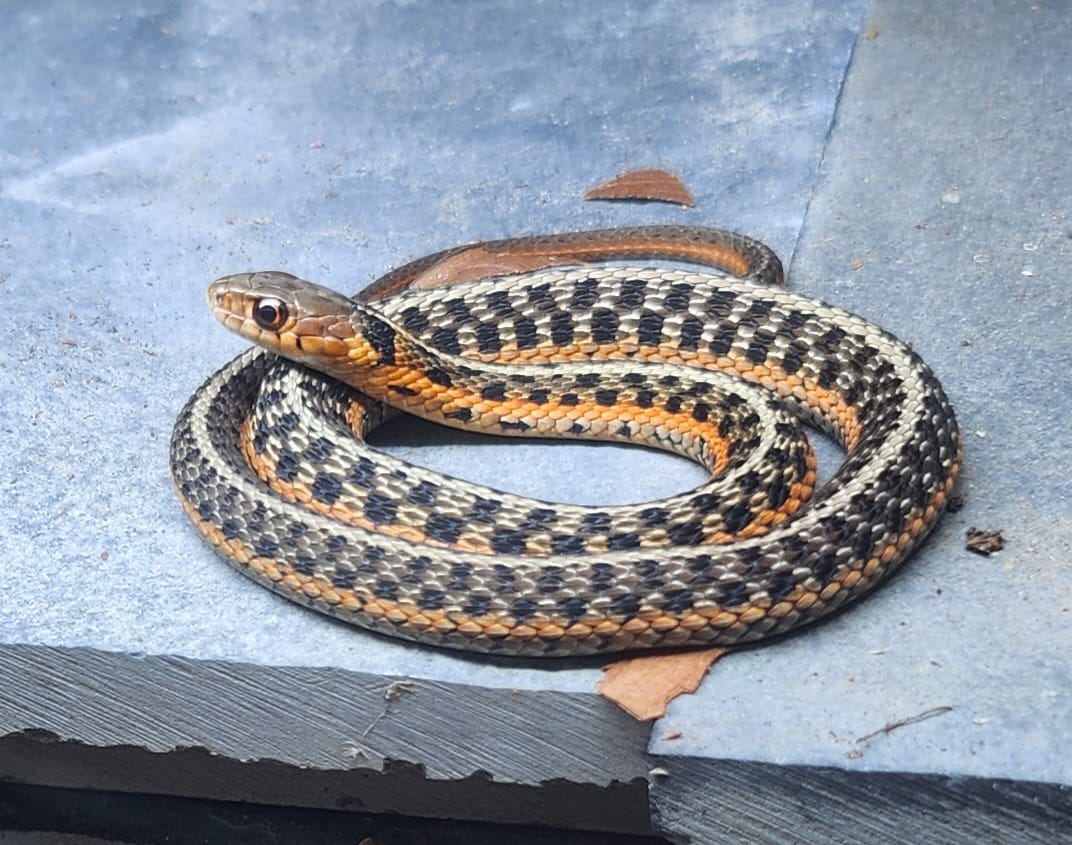Description
Eastern Garter Snake (Flame)
Thamnophis sirtalis sirtalis
Difficulty Level: Beginner
Size (Total Adult Length): Approximately 2ft
Caring for a Eastern garter snake involves providing an appropriate environment, diet, and routine care to ensure their well-being and longevity. These snakes are popular due to their hardiness, ease of care and striking appearance. They also appeal due to their highly active and inquisitive nature.
Enclosure Enclosures should be large enough to provide a thermal gradient, a minimum of two hides (one at the cool side and one on the warm side) this helps your snake feel secure whilst still being able to thermoregulate. The enclosure would also require a water bowl and some decor including branches for climbing opportunities,cork bark,fake plants. These snakes can make good suitable candidates for a live planted “bioactive” enclosure.
A minimum of a 3ftx2ft is recommended for an adult Garter snake. Garters snakes are
incredibly good escape artists therefore extra care should be taken to ensure your enclosure is escape proof!!
Substrate Substrate options such as aspen bedding, coconut coir and husk allow for burrowing and easy spot cleaning.
Occasionally changing around or adding new hides/branches or foliage helps aid
enrichment and prevent boredom as these snakes will keenly investigate any new additions to their enclosure.
Temperature and Lighting
The ideal temperature gradient for a garter snake enclosure ranges from the mid 70s (°F)
on the cool end with a basking spot of around 84-86°f (29-30°c). Temperatures should
always be controlled by a thermostat. Night-time temperatures can drop to low 70s (°F). UVB lighting can benefit their overall health and well-being seeing as these snakes are primarily a diurnal species. Avoid placing the cage near windows where direct sunlight can overheat the enclosure.
Diet
In captivity, garter snakes should primarily be fed a staple diet of rodents, typically mice, that are appropriately sized for the snake. Starting with pinkies for younger snakes and
transitioning to larger prey as they grow. Garter snakes can occasionally be offered
thiaminase free fish (ie salmon, trout and lance fish),chicken heart and frog legs from Asian food markets. If fish is offered it is always advisable to supplement a small amount of soluble vitamin B1 in their drinking water. Feeding can range from once a week for adults to more frequently for growing juveniles. It's advisable to feed pre-killed or frozen-thawed prey to avoid injury to the snake.
Water and Humidity
A bowl of fresh water should always be provided. While Garter snakes don't require high
humidity levels, maintaining a range of 35% to 60% is sufficient, with slight increases during shedding periods to facilitate the process.
Handling and Temperament
Hatchlings can be fast and flighty and can “musk” if feeling nervous. Most do generally calm down with regular handling and age. Avoid handling during shedding periods to prevent stress.
General Care
Inspect the enclosure daily and spot clean as necessary. Enclosures should regularly be disinfected with a reptile safe disinfectant and substrate replaced. Monitor your snake's health, watching for signs of scale/shedding issues, obesity, refusal to eat, lethargy, respiratory issues or other health concerns. Creating an enriching environment with hides and structures can promote natural behaviours and ensure your snake's well-being.
Order and get 110 reward points
Earn points by signing up for our rewards program

